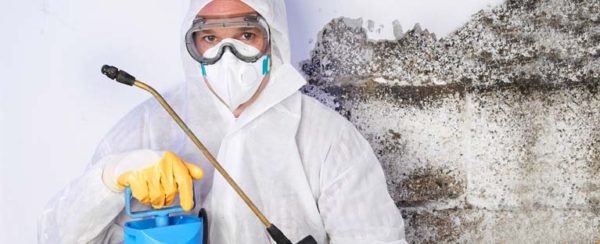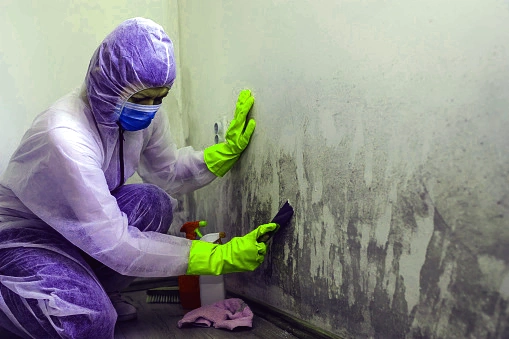Precision Mold And Mildew Remediation Techniques for Making Certain a Healthy Living Setting
In the world of preserving a healthy and balanced living environment, the efficiency of mold removal methods stands as an important aspect that requires precision and expertise. Mold and mildew infestations can be perilous, affecting interior air quality and presenting risks to both residential property and health and wellness. Addressing mold development exceeds simple surface area cleaning; it requires a thorough method that incorporates assessment, targeted approaches, and the utilization of sophisticated technologies. By checking out the ins and outs of mold and mildew remediation methods, one can obtain insight into guarding against mold-related issues and promoting a much healthier environment.
Recognizing Mold And Mildew Development Variables
Recognizing the key factors that add to mold growth is important in developing efficient approaches for mold remediation. Mold requires three main elements to thrive: dampness, ideal temperature levels, and natural product for food. Wetness is maybe the most vital aspect as mold spores can rapidly colonize and spread in wet settings. Leakages, floods, high humidity degrees, or condensation give the needed wetness for mold development. Temperature level likewise plays a considerable role, with the majority of mold and mildews choosing temperatures in between 60-80 ° F(15-27 ° C) Mold feeds on organic products such as wood, paper, drywall, and fabrics.

Assessment of Mold And Mildew Infestations
Having actually determined the key aspects that add to mold development, the next critical step is analyzing the extent of mold and mildew infestations within a residential property. Mold evaluation entails an extensive examination to identify the sort of mold and mildew present, the impacted locations, and the severity of the invasion. Specialist mold and mildew assessors use a mix of aesthetic inspection, wetness meters, thermal imaging electronic cameras, and air sampling to gather data on the mold trouble.
Aesthetic inspection is typically the primary step in assessing mold invasions, where specialists aesthetically analyze areas susceptible to mold and mildew development, such as cellars, attics, and restrooms. This assists determine noticeable mold growth and areas with indications of water damage or high moisture levels. Moisture meters are then used to spot moisture levels in structure products, assisting in situating surprise mold and mildew development behind ceilings or walls.
Additionally, thermal imaging cameras can be utilized to discover temperature differences that might show dampness problems promoting mold development. Air tasting is one more essential technique used to accumulate air-borne mold spores, providing details on the focus and types of mold existing in the interior environment. By utilizing these analysis techniques, professionals can properly examine the mold problem and establish an effective removal strategy to guarantee a healthy and balanced living setting.

Implementing Targeted Remediation Techniques
To efficiently attend to mold and mildew invasions, applying targeted removal approaches is essential for eliminating the root causes of mold growth and ensuring a mold-free environment. These strategies involve a systematic approach tailored to the specific mold and mildew concerns recognized throughout the evaluation phase. By targeting the underlying factors contributing to mold and mildew development, such as wetness invasion, insufficient ventilation, or building material issues, removal initiatives can be a lot more efficient and exact.
One targeted remediation strategy is to resolve water leakages immediately to avoid moisture accumulation, which is a main chauffeur of mold and mildew proliferation. This may entail fixing plumbing leakages, enhancing drainage systems, or boosting waterproofing procedures. Furthermore, improving air flow in moist areas can aid minimize humidity degrees, creating a setting less for mold and mildew growth.
In addition, targeted remediation methods might include removing and changing mold-infested products, such as drywall or insulation, and applying antimicrobial treatments to prevent future mold and mildew advancement. Regular tracking and upkeep are vital to sustaining a mold-free setting following removal efforts - mold remediation philadelphia pa. By implementing these targeted methods, home proprietors can efficiently deal with mold invasions and advertise a healthier living atmosphere
Making Use Of Advanced Mold Removal Technologies
Including state-of-the-art innovations is vital in the reliable elimination of mold and mildew problems and ensuring long-term prevention steps. Advanced mold removal innovations my sources play a vital duty in resolving mold and mildew concerns properly and adequately. One such modern technology is the usage of High-Efficiency Particulate Air (HEPA) purification systems. These systems can record and remove mold and mildew spores and various other airborne bits, considerably decreasing the spread of mold during remediation.
Additionally, progressed mold and mildew removal technologies consist of infrared cams that can detect concealed wetness sources within ceilings or walls, assisting in the exact identification of locations susceptible to mold growth. best mold remediation philadelphia. This technology allows remediation professionals to target afflicted areas extra precisely, leading to a much more extensive elimination process
Ultraviolet (UV) light therapy is another cutting-edge technology used in mold removal. By leveraging these innovative technologies, mold removal experts can successfully remove mold and mildew infestations and produce a healthier living atmosphere for owners.
Avoiding Future Mold Reoccurrences
With the effective removal of mold problems making use of sophisticated innovations, the focus currently changes towards implementing durable strategies to protect against future mold and mildew reappearances. Protecting against mold and mildew from persisting is important for maintaining a healthy and balanced indoor environment.
Correct air flow is another essential facet of mold avoidance. Making sure sufficient air movement in all areas of the building can help in reducing moisture levels and protect against wetness build-up. Utilizing dehumidifiers in damp areas such as basements can additionally assist in managing dampness levels.
Keeping tidiness and without delay dealing with any kind of water damage or spills can better help stop mold development. Normal cleaning regimens should include cleaning, vacuuming, and wiping down surfaces to avoid the build-up of mold and mildew spores.
Educating occupants regarding mold and mildew prevention methods, such as correct ventilation and wetness control, can also add to an aggressive technique in preventing future mold problems. By applying these techniques, the danger of mold and mildew recurrences can be considerably minimized, leading to a healthier living atmosphere.
Verdict
By recognizing mold and mildew growth Resources elements, assessing infestations, applying targeted methods, using advanced elimination innovations, and preventing future reoccurrences, one can successfully combat mold and mildew issues. It is important to focus on mold remediation to make certain the wellness of residents and protect against Discover More prospective health threats connected with mold direct exposure.
